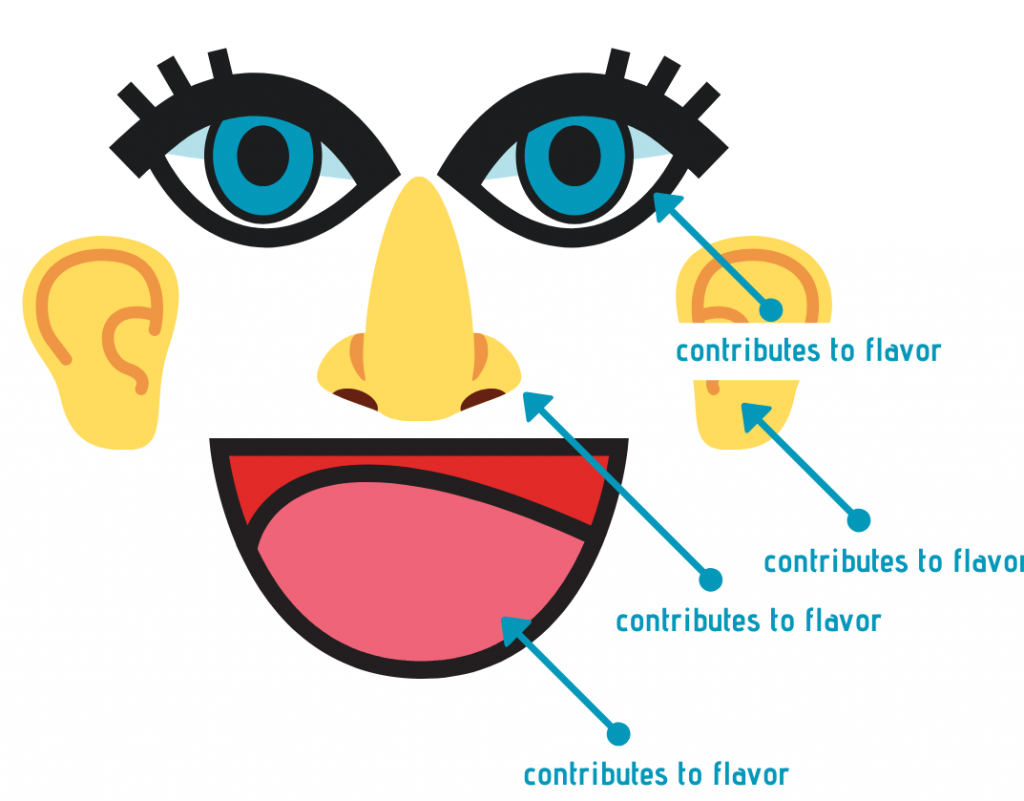Plane food is known to taste – well – not so good. The bad news is that researchers have found out why that is and there’s not much we can do about it. The good news is that researchers how found out why that is and now plane companies can prepare foods that have tastes that are more compatible with plane flight.
And then charge us an arm and a leg for it.
Nevertheless, let’s take a closer look at that science, shall we?
Taste or flavor?
When we say something “tastes” good, we typically are talking about its flavor. Flavor is our general sensory perception of something we put into our mouth (phrasing?). It’s the combination of our other senses, mostly taste – what is perceived by our taste buds on our tongue and in our mouth – and smell – what is perceived by receptors in our nose.
Wait, there’s more.
Part of flavor depends on psychological factors, and hence from other senses. Have you ever eaten an apple that – while it may have tasted okay – had a grainy feel? Would you have said that the apple was “flavorful”? I wouldn’t. And food that just looks unappealing will have to work a lot harder to make our brain thinks it’s tasty.
Finally, it turns out that sound influences the way we perceive flavor. And that’s where planes come in.

Quiet in the cabin, please
Research suggests that one of the main reasons for plane food tasting so bad – apart from maybe mediocre cooking and aluminum food trays – is because loud noise environments significantly influence our sense of taste.
Airline cabins are notoriously loud. Noise is often over 85 dB, which is louder than that annoying open office you work in. During take-off and landing, noise can even up to 105 dB, but as your trays must be in the upright position – you’ll not be eating at that time anyway.
Here’s how your taste perception changes: sweet tastes are suppressed, while umami is enhanced.
That means that sugary drinks don’t taste as sugary and actually might explain how I – a non-soft-drink-drinker – can bear drinking a can of coke. A mini can of coke, obviously, that’s all you’ll get. You might have also noticed that the cookies you get on the plane taste suspiciously sweet off the plane (if you are like me and just put everything you get in your bag for a future snack).
On the other hand, umami gets a bit of a boost. Umami is the savory taste you find in foods with high levels of the amino acid glutamate, such as tomato juice, mushrooms, miso, and parmesan cheese.
Some airlines are very aware of this savory fact. The German airline Lufthansa started working with chefs to make more savory meals after they had observed that their passengers were drinking the same quantities of tomato juice as beer!

Where do we go from here?
Other airlines could pay attention and change their recipes to take advantage of that enhanced-umami effect. Or hand out earplugs for during meals (I’m not sure there has been research on how earplugs might help).
Or – as we do in our family – you bring your own food. Just knowing you made it yourself makes it taste better; let’s be honest, airplane food just always looks a bit mushy. So make an omelet sandwich!
Bone App The Teeth!
Original paper: Yan KS, Dando R. A crossmodal role for audition in taste perception. J Exp Psychol Hum Percept Perform. 2015 Jun;41(3):590-6. doi: 10.1037/xhp0000044.

